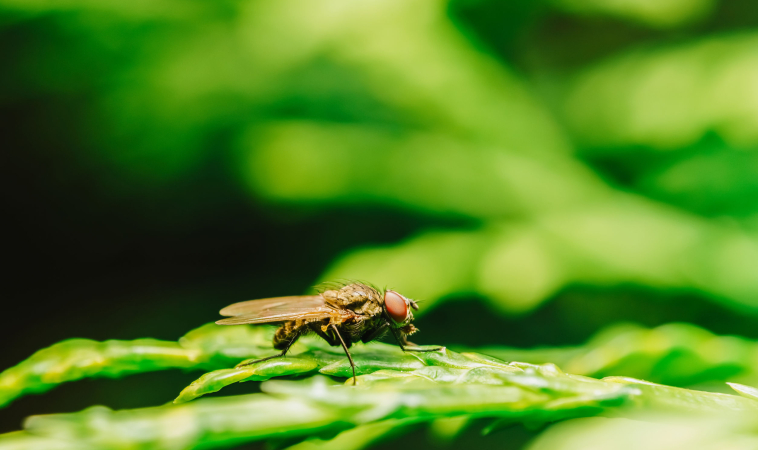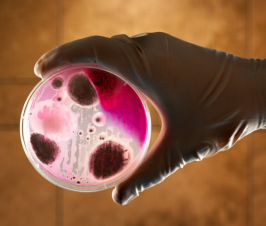How fun does it sound to watch a group of flies get drunk and fly around? This isn’t a metaphor for the regulars that hang around your neighborhood tavern, but a research study that was recently conducted to study the process of alcohol intoxication – using actual flies, bzzzzzzz.
Bar Flies
As it turns out, mammals and flies metabolize alcohol in similar ways, both being susceptible to the substances central nervous system effects. In other words, both flies and humans can get drunk on alcohol.
The study reveals new insight into how intoxication occurs
The study was published in the Journal of Molecular Biology, and reveals new insight into just how intoxication occurs. Apparently, alcohol exerts its effects on nerve cells indirectly by employing intermediary molecules on the surface of neurons. These intermediary molecules are what produce the intoxicating effect.
Tracking ethanol’s path through a physiological system
Scott Hansen, PhD, associate professor in the Department of Molecular Medicine, and his team, inebriated fruit flies to track ethanol’s path through a physiological system. The fly is a useful model to study gene activity because its genome is smaller than other animals and is easily manipulated, Hansen says.
“They act just like people,” Hansen says about the flies. “They start losing coordination. They literally get drunk.”
Feeling ‘buzzzzzzed’
It is known that the alcohol in adult beverages acts like an anesthetic, creating a feeling of hyper “elation” or a feeling of being “buzzed.” Then sedation settles over the central nervous system and most people become tired. But how does this work? Until now, this intermediate step was not known.
Researchers looked at a system in the body known to play a role in anesthesia
The researchers looked at a system in the body that is known to play a role in anesthesia. They looked at a specific enzyme on neurons called phospholipase D2 (PLD2). The enzyme links ethanol molecules to lipids (fat) in the nerve membrane. The enzyme was seen to catalyze multiple downstream activities after interaction with the ethanol (alcohol) molecule. It creates a fatty alcohol metabolite called phosphatidylethanol (PEtOH). PEtOH builds up and causes the nerve to fire easier – more hyperactivity in the flies.
Researchers knocked out the enzyme that makes PEtOH
When the researchers knocked out the enzyme that makes PEtOH, thus taking away the inebriation signal, the flies did not display increased activity after being exposed to ethanol.
First time this pathway has been seen in relation to alcohol sensitivity
This is the first time this pathway has been seen as related to alcohol sensitivity. The researchers explained that it is not yet known how this metabolite is involved in the full experience of sedation after the initial feelings of inebriation or how it may be involved in later hangover states, but current research is also looking into these questions.
Could allow for future development of antidotes to intoxication
The knowledge of alcohol’s molecular targeting could allow for the future development of antidotes to intoxication, or even hangovers.
Fatty alcohol known to linger in the brain for more than 16 hours
“The fatty alcohol is known to linger in the brain for more than 16 hours making it a likely target,” Hansen says. “Also, understanding this pathway could give insight as to why people use alcohol for pain management.”
“It has definitely led to some different ways of thinking about alcohol intoxication at the molecular level,” Hansen says. “Most scientists thought alcohol had a direct effect. Blocking the enzyme in flies shows that’s not likely true.”
Source:
- Chung HW, Petersen EN, Cabanos C, et al. A Molecular Target for an Alcohol Chain-Length Cutoff. J Mol Biol. 2018.
 Razi Berry is the founder and publisher of the journal Naturopathic Doctor News & Review that has been in print since 2005 and the premier consumer-faced website of naturopathic medicine, NaturalPath. She is the host of The Natural Cancer Prevention Summit and The Heart Revolution-Heal, Empower and Follow Your Heart, and the popular 10 week Sugar Free Summer program. From a near death experience as a young girl that healed her failing heart, to later overcoming infertility and Chronic Fatigue Syndrome and Fibromyalgia through naturopathic medicine, Razi has lived the mind/body healing paradigm. Her projects uniquely capture the tradition and philosophy of naturopathy: The healing power of nature, the vital life force in every living thing and the undeniable role that science and mind/body medicine have in creating health and overcoming dis-ease. Follow Razi on Facebook at Razi Berry and join us at Love is Medicine to explore the convergence of love and health.
Razi Berry is the founder and publisher of the journal Naturopathic Doctor News & Review that has been in print since 2005 and the premier consumer-faced website of naturopathic medicine, NaturalPath. She is the host of The Natural Cancer Prevention Summit and The Heart Revolution-Heal, Empower and Follow Your Heart, and the popular 10 week Sugar Free Summer program. From a near death experience as a young girl that healed her failing heart, to later overcoming infertility and Chronic Fatigue Syndrome and Fibromyalgia through naturopathic medicine, Razi has lived the mind/body healing paradigm. Her projects uniquely capture the tradition and philosophy of naturopathy: The healing power of nature, the vital life force in every living thing and the undeniable role that science and mind/body medicine have in creating health and overcoming dis-ease. Follow Razi on Facebook at Razi Berry and join us at Love is Medicine to explore the convergence of love and health.

















